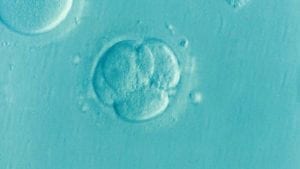A birth involving mitochondrial replacement therapy took place as part of a clinical trial in Greece according to a recent article in STAT. Greece is now the second country to allow the procedure which involves using DNA from a biological mother, father, and “third parent”.
The United Kingdom was the first country to approve the therapy but reserved its approval for rare cases where the baby would be at risk of developing the disease.
A Ukranian clinic announced similar births but they were not part of clinical trials.
The United States banned the procedure over concerns that implanting a “third parent’s” DNA into an embryo is a form of genetic modification that would impact future generations. The safety of the child is also a consideration plus there are ethical concerns as well.
About the Procedure
Between one thousand to four thousand babies born in the United States each year develop mitochondrial disease also known as IVF. There is no known method of testing for the disease so that it is only discovered in the mother after giving birth to a baby with IVF.
The babies inherit the disease from their mother’s DNA. It is for this reason that the nucleus is removed from the mother’s egg and implanted into the donor’s egg after the donor’s nucleus is removed.
The donor nucleus is surrounded by a substance that is very much like jelly, called cytoplasm. Mitochondria inhabit the donor egg and are credited with being energy-producing structures. The sperm fertilizes the egg before or after the transfer. Otherwise, the IVF procedure does not change. Details about the disease are available here.
About the Spindle Transfer
- Mother’s egg has abnormal mitochondria
- The nucleus from the mother’s egg is removed and implanted in the donor’s egg
- The nucleus is extracted from the donor’s egg
- A new cell is created and is fertilized by sperm
- The new cell is placed into the mother’s womb
The baby now carries the healthy mitochondrial DNA from three people
Can the U.S. Ban be lifted?
A group of bioethicists, scientists and patient advocates are lobbying to remove the ban. Their platform is based on their assertion that this procedure can help women have healthy children who will be born free of the diseases carried by their biologically related mother.
The group mentioned that in some ways this situation is similar to in-vitro fertilization that also faced many challenges. A few embryologists suggest that improving egg quality through healthy mitochondria will result in successful pregnancies.
The technology is now being used in the Ukraine, Greece and the U.K. mainly for infertility. The scientists point out that if this technique continues to be successful, it will help older women who thus far have been unable to conceive.
Objections to the Procedure
Others in the medical field are concerned that people will have the procedure performed in countries that do not have protective regulations in place.
A director of a clinic in Ukraine stated that seven babies were delivered using the technique and another three pregnancies are underway. He said the clinic has received approval from the Ukrainian government although the data has not been registered in clinical trials.
And then others claim that there is not enough evidence to prove its safety. They contend that these children would have to be followed at least until they are eighteen years of age.
There is also the argument that mitochondrial replacement therapy is not really “therapy” as it is not treating a person. They also contend that the term “mitochondrial replacement” is not proper because it actually replaces the nucleus. This group likens it to cloning such as in the case of Dolly the sheep.
Authorities in the United Kingdom report that they have received fifteen applications in connection with fertility treatment and have approved fourteen for mitochondrial replacement therapy.
There is no doubt that the push to eliminate the ban in the U.S. will be ongoing and will be followed closely by couples anxious to have healthy biological babies.

.jpg)




